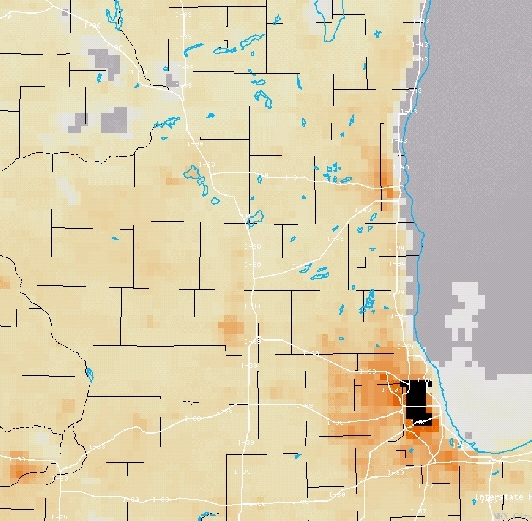Monitoring the Global Environment

Remote Sensing Urban Heat Islands - I
Urban Heat Island Effect
It has been known for some time that cities are generally warmer than the surrounding more rural areas. Because of this relative warmth, a city may be referred to as an urban heat island. The reason cities are often warmer than the countryside comes down to a difference between the energy gains and losses of each region, something that is uniquely suitable for POES satellites to measure and monitor.
There are a number of factors that contribute to the relative warmth of cities:
- During the day in rural areas, the solar energy absorbed near the ground evaporates water from the vegetation and soil. This results in evaporative cooling that detracts from the solar energy gain. In cities, where there is less vegetation, the buildings, streets and sidewalks absorb the majority of solar energy input. Because the city has less vegetation, and pavement is largely nonporous (except by the pot holes!), precipitation runoff is greater. Thus, evaporative cooling is less which contributes to the higher air temperatures.
- Waste heat from city buildings, cars and trains is another factor contributing to the warm cities. Heat generated by these objects eventually makes its way into the atmosphere. This heat contribution can be as much as one-third of that received from solar energy. The thermal properties of buildings add heat to the air by conduction. Tar, asphalt, brick and concrete are better conductors of heat than the vegetation of the rural area.
- The canyon structure that tall buildings create enhances the warming. During the day, solar energy is trapped by multiple reflections off the buildings while the infrared heat losses are reduced by absorption.
Urban heat island effects can also be reduced by weather phenomona. The temperature difference between a city and surrounding areas is partly a function of the synoptic (large scale) winds. Stronger winds reduce the temperature contrast by mixing the city and rural air together. Sometimes the small scale thermal circulation between a city and surrounding region results in increased cloudiness and precipitation over urban areas which can also cool cities down a bit.
| 12/ 15 |






